In the southeast corner of Kansas, farmers have been busy growing corn, soy, and sorghum for generations. The land is flat and if you stand tall on a sunny day you can see for miles.
Neosho County and the others that surround it were Native American hunting grounds when the first white men visited. Throughout the years, claims on the land were made by both Spain and France, then finally in 1803, the United States completed a land acquisition deal with France, for which $15 million was paid, and 827,000 square miles of land west of the Mississippi River became known as the Louisiana Purchase.
In 1854 the Territory of Kansas took administrative control of the land and in 1861, after an embittered and protracted congressional fight between free-state and slave-state factions, the territory became the 34th state of the Union.
Interest in the land as farm acreage began to grow in the early 1870s – about the same time as the first railroad company laid tracks through Neosho County. Those who moved to the area were war-weary easterners, failed farmers from drought-stricken Ohio, Pennsylvania and Virginia, and some newly immigrated potato-starved Irish.

Three of the “destination” villages were Chanute, Earlton, and Thayer – all just a few miles west of the Neosho River. In a nearly straight north to south line along US Route 169, these three villages along with Iola and Coffeyville define southeastern Kansas.
Two of the Neosho settlers were Samuel Hamilton Ross and Abram L. Bean. Sam Ross arrived in Kansas from Hardin City, Ohio, about 1880. Early on Sam met Almira Hunt, and in 1883 he married her. They moved to Severy and farmed a piece of land where they raised their four children: Lillie, Willard, Benjamin, and Charles.
Abram Bean of Lebanon, Pennsylvania, made his way to Kansas and in 1879 married Ellen Sager. They settled in Chanute and opened a mercantile which served the needs of their community until Abram died in 1901. Henry was the first-born of the Bean’s children, in 1880.
Then, as well as today, only 50 miles of sand mines, soybeans, and scrub brush separated Severy and Chanute. However difficult it was to travel those miles in 1913, in some way Henry Bean and Lillie Ross met, married, and moved into the comfortable farming community of Earlton, Kansas.
In the 119 years between 1880 and 1999 three generations of Beans and Rosses (the eight children of Abram and Ellen Bean, the four Ross siblings reared by Sam and Almira Ross, and Henry’s and Lillie’s daughter Ellen and son Lawrence) lived and worked in southeastern Kansas.
**

Henry and Lillie were still newlyweds when Lillie’s Aunt May sent the postcard above to announce, “If nothing happens, we will be at your place next Sunday the 11th of Jan.” This seemingly obligatory notice was mailed from Thayer, Kansas on January 8, 1914. Was it a suggestion that Henry and Lillie should make a special effort to be home to receive Aunt May or a simple courtesy saying that Aunt May would make the arduous journey of six miles and wanted Lillie to remember that Aunt May’s visit would be an enjoyable family event?
The postcard Aunt May sent Lillie was one of a set of eight published for the Buckbee Seed Company of Rockford, Illinois. Hiram W. Buckbee, began selling cabbage plants when he was eleven years old, and later built a business that included a 350,000 square-foot warehouse, greenhouse complex, and trial area, along with a 15,000-acre seed farm.
An 1892 Buckbee family history suggested that the Buckbee’s “immense business, with its collateral branches, Rockford Seed Farms and Forest City Greenhouses, was one of the most important merchandising institutions, not only of Rockford, but in all of Illinois.” One of Hiram’s obituaries went further saying his business was the largest of its kind in the U.S. In 1921, the year of Hiram’s death, his company mailed out 750,000 catalogues.
Buckbee Seed Farm Postcards
At the turn of the 20th century the Buckbee surname was recognized everywhere someone kept a farm or garden. From corporate records made public after the firm closed its doors in the 1970s, we know that more than 75,000 catalogs were mailed to the Buckbee client list in 1914, but nowhere to be found is any mention of the postcard sets used for an unknown period before then. The earliest known date of use is February 12, 1910, at Keep Tryst, Maryland (later known as Sandy Hook).
Attention collectors: a diligent search will uncover several different postal card designs (the format changed annually) that Buckbee used for business reasons. The postal cards were meant to request seed catalogs or garden supplies. Each is addressed to the Buckbee headquarters in Rockford, Illinois.
In addition to Buckbee, Rockford was home to three other prominent mail order seed and plant wholesalers: Roland H. Shumway, Alneer Brothers, and Condon Brothers. The four businesses would later merge under the name of Condon-Shumway, a company that did business worldwide until the 1970s. At that point in time the client list looked much like a Hollywood phonebook – people like Bing Crosby and Perry Como were customers.
In addition, readers may enjoy the irony of a “pea-patch” postcard being particularly appropriate for a message sent to a person whose name was Bean.
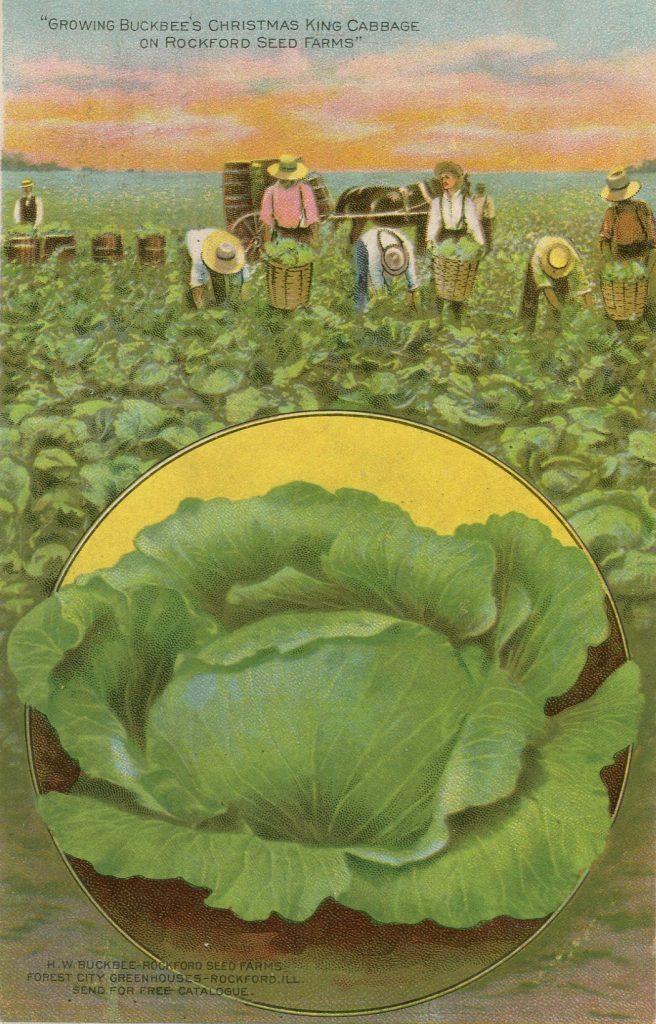
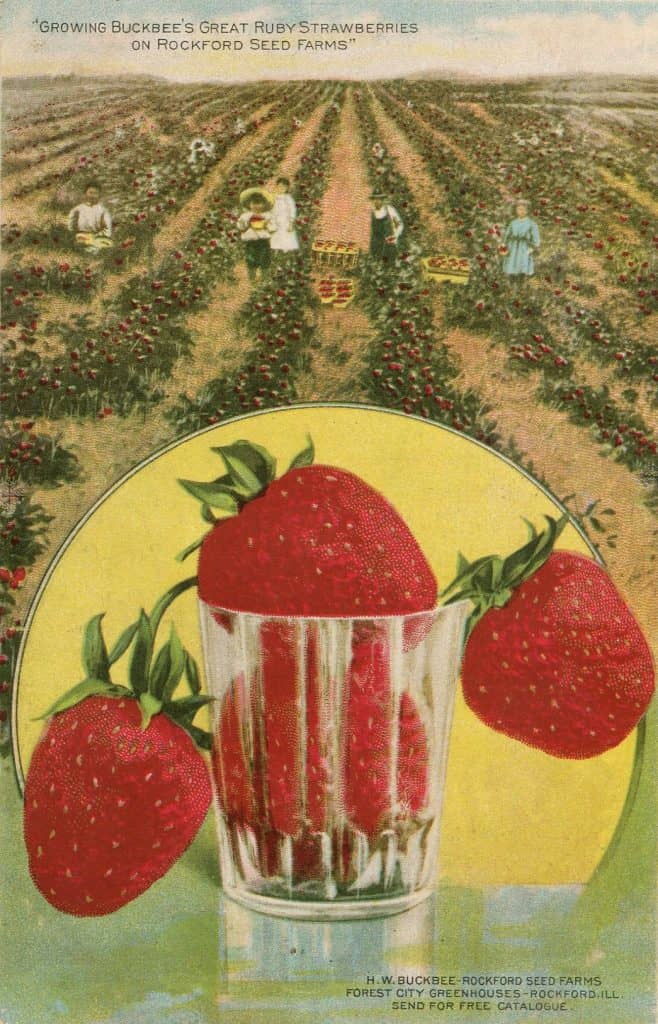
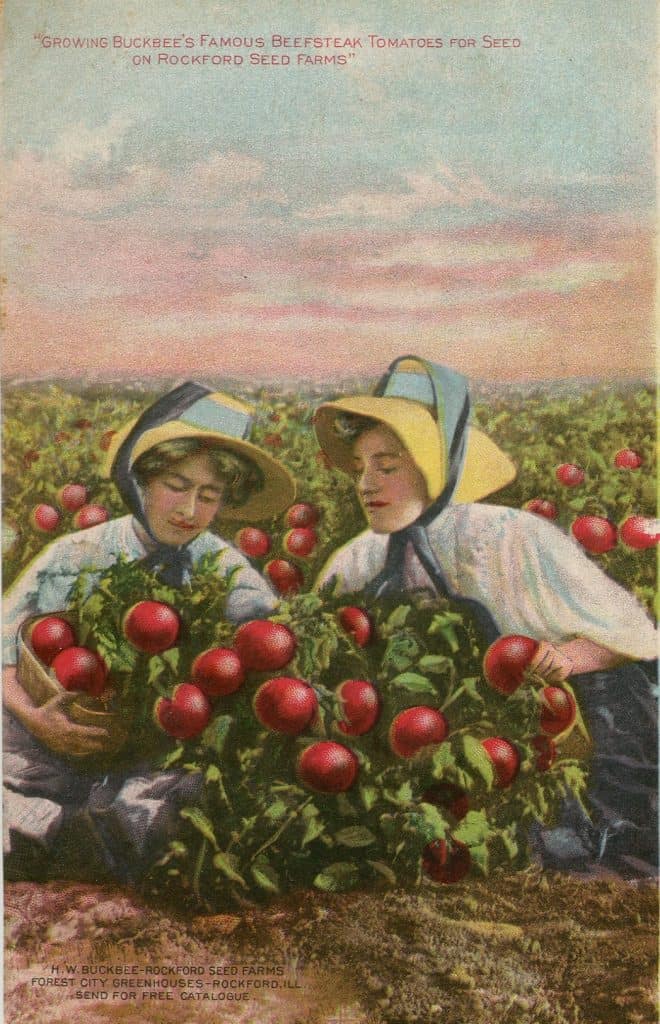
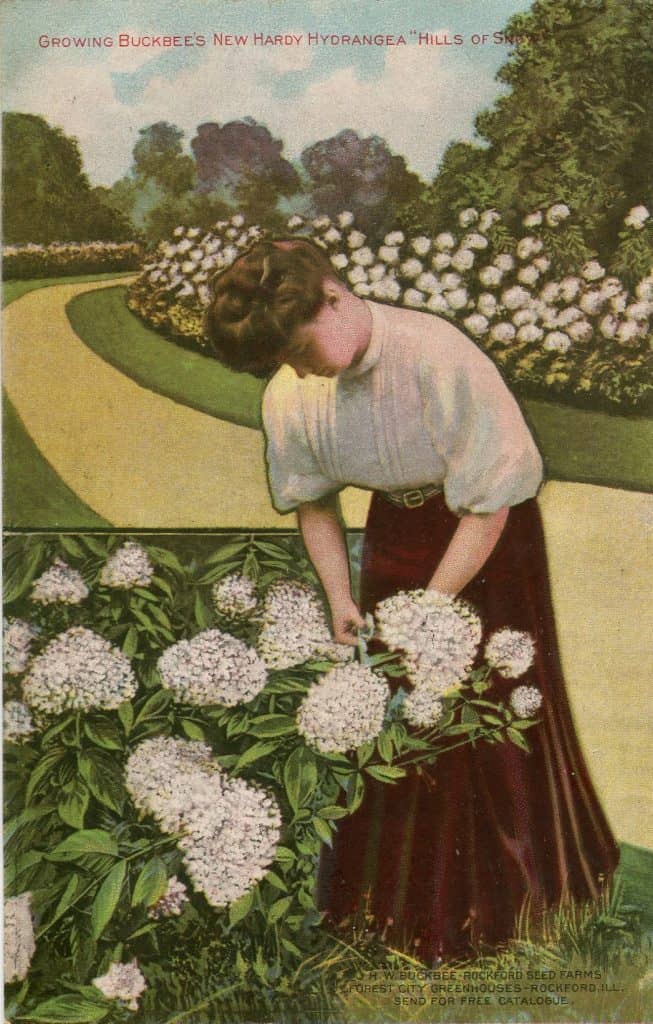
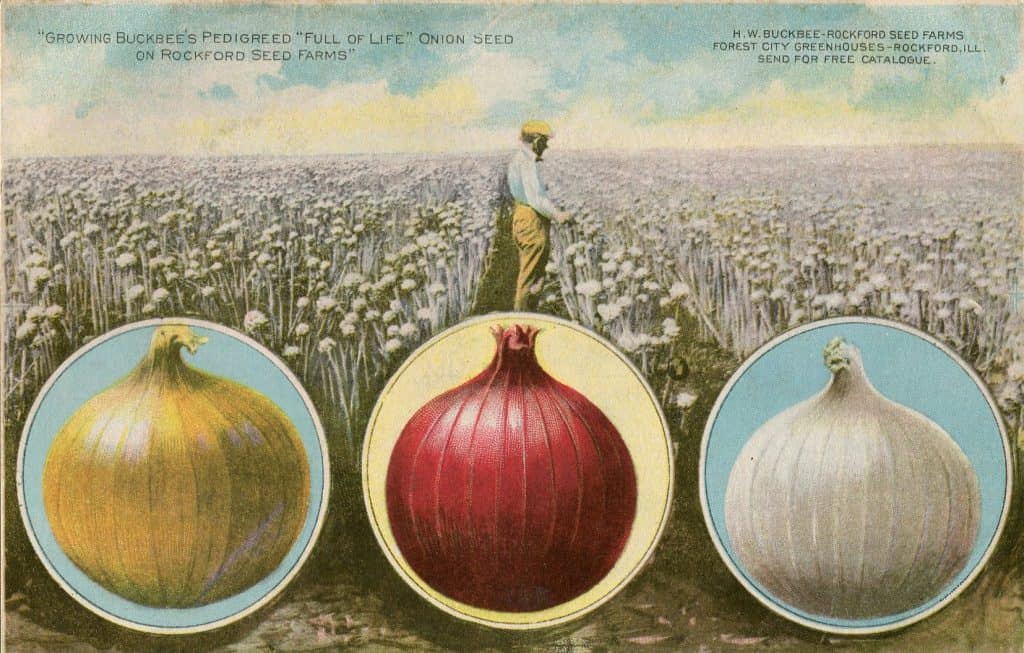
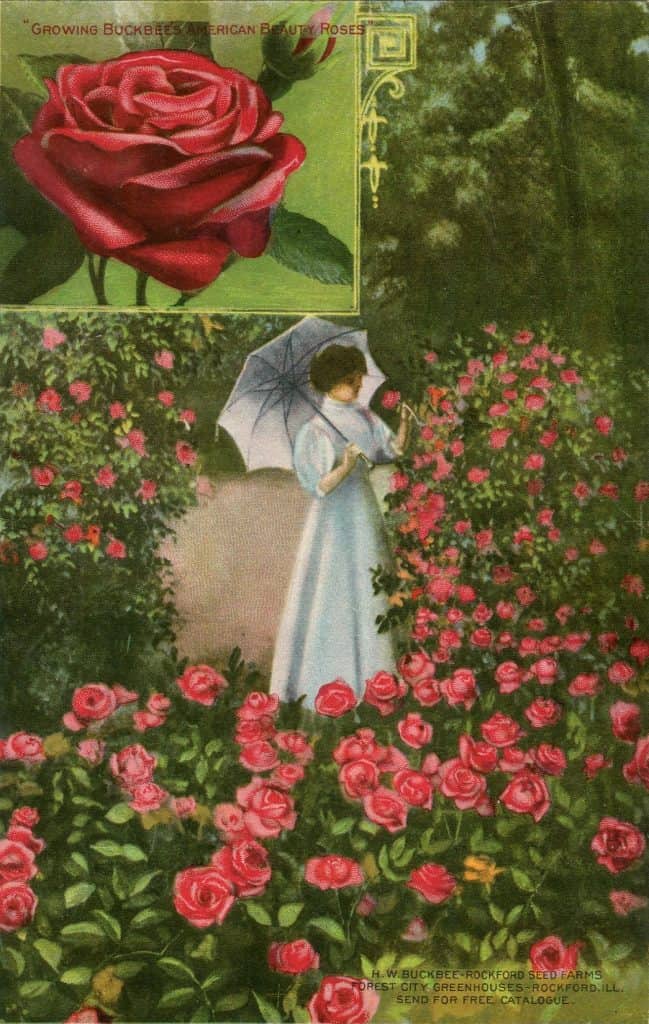
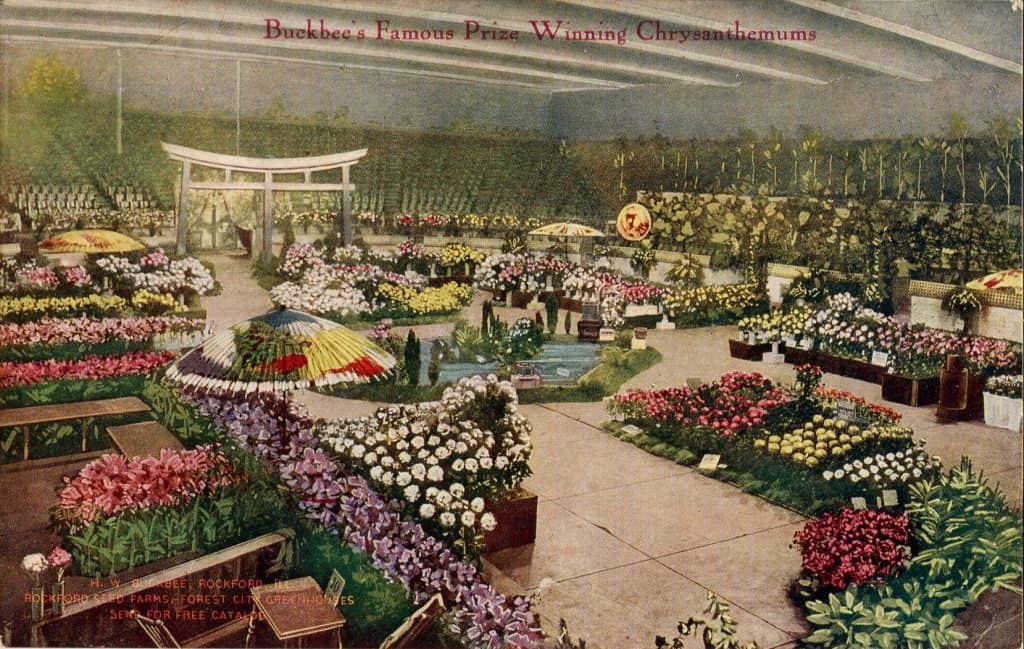
America was founded on agriculture, and I fine this article really interesting. In addition, the irony of the “pea-patch” postcard being sent to a Bean is similar to the irony of the article, including “lettuce” being written by a Romaine.
I’m now wondering how the Buckbee strawberries of a century ago compared in taste to their modern counterparts.
Delightful to read this “vegetable” article. A long time collector, I’m a rather new collector on this topic having moved to Cambridge NY, former home of Rice Seed. The rice seed cards are fantasy images, people with vegetable bodies, and a joy to search for these trade cards. The same images were also used by other seed companies.
I wonder if Cynthia is collecting these images.
This is a very interesting article. It makes me want to research a couple of our cards that were published by seed companies.